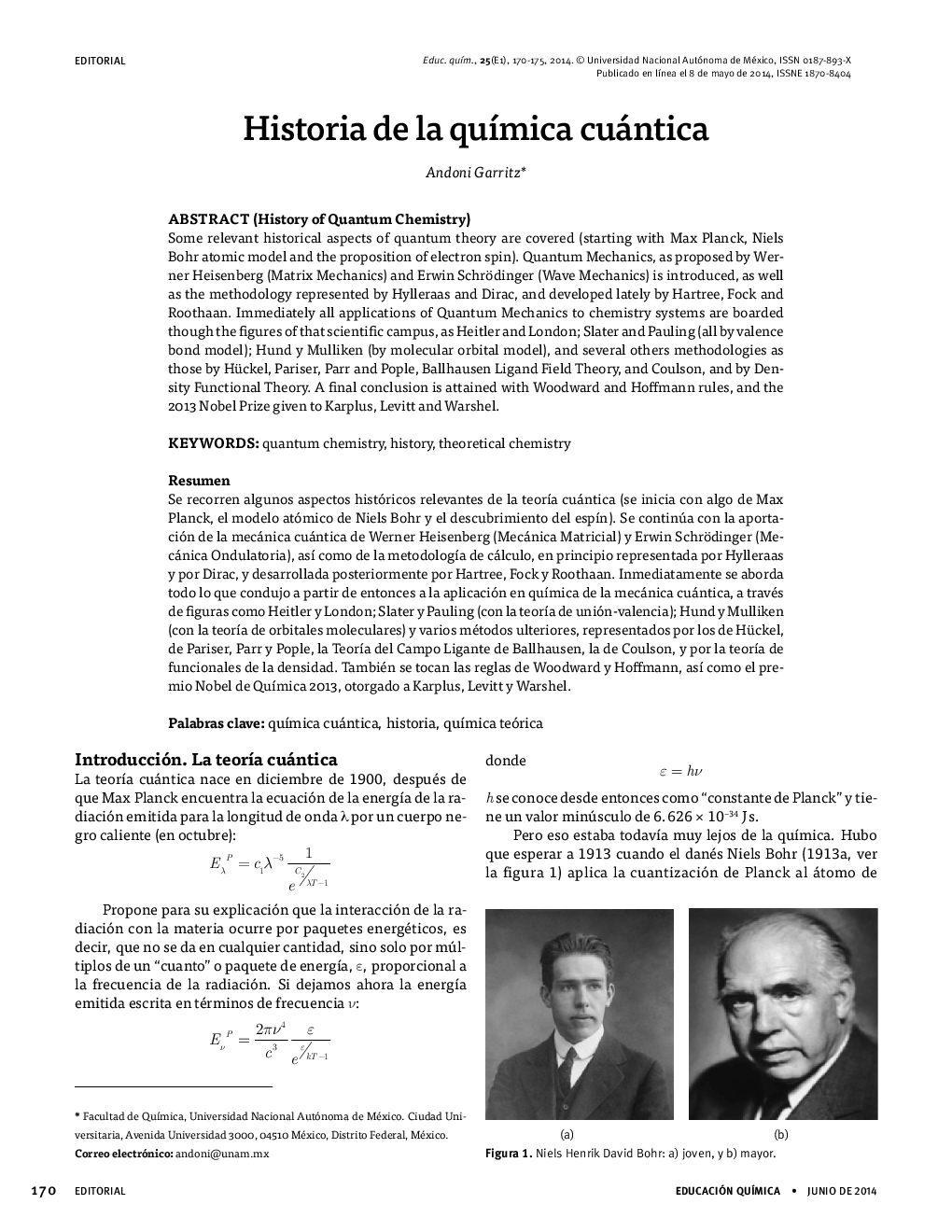| کد مقاله | کد نشریه | سال انتشار | مقاله انگلیسی | نسخه تمام متن |
|---|---|---|---|---|
| 1183294 | 963238 | 2014 | 6 صفحه PDF | دانلود رایگان |
(history of quantum chemistry)Some relevant historical aspects of quantum theory are covered (starting with Max Planck, Niels Bohr atomic model and the proposition of electron spin). Quantum Mechanics, as proposed by Werner Heisenberg (Matrix Mechanics) and Erwin Schrödinger (Wave Mechanics) is introduced, as well as the methodology represented by Hylleraas and Dirac, and developed lately by Hartree, Fock and Roothaan. Immediately all applications of Quantum Mechanics to chemistry systems are boarded though the figures of that scientific campus, as Heitler and London; Slater and Pauling (all by valence bond model); Hund y Mulliken (by molecular orbital model), and several others methodologies as those by Hückel, Pariser, Parr and Pople, Ballhausen Ligand Field Theory, and Coulson, and by Density Functional Theory. A final conclusion is attained with Woodward and Hoffmann rules, and the 2013 Nobel Prize given to Karplus, Levitt and Warshel.
ResumenSe recorren algunos aspectos históricos relevantes de la teoría cuántica (se inicia con algo de Max Planck, el modelo atómico de Niels Bohr y el descubrimiento del espín). Se continúa con la aportación de la mecánica cuántica de Werner Heisenberg (Mecánica Matricial) y Erwin Schrödinger (Mecánica Ondulatoria), así como de la metodología de cálculo, en principio representada por Hylleraas y por Dirac, y desarrollada posteriormente por Hartree, Fock y Roothaan. Inmediatamente se aborda todo lo que condujo a partir de entonces a la aplicación en química de la mecánica cuántica, a través de figuras como Heitler y London; Slater y Pauling (con la teoría de unión-valencia); Hund y Mulliken (con la teoría de orbitales moleculares) y varios métodos ulteriores, representados por los de Hückel, de Pariser, Parr y Pople, la Teoría del Campo Ligante de Ballhausen, la de Coulson, y por la teoría de funcionales de la densidad. También se tocan las reglas de Woodward y Hoffmann, así como el premio Nobel de Química 2013, otorgado a Karplus, Levitt y Warshel.
Journal: Educación Química - Volume 25, Supplement 1, July 2014, Pages 170–175
